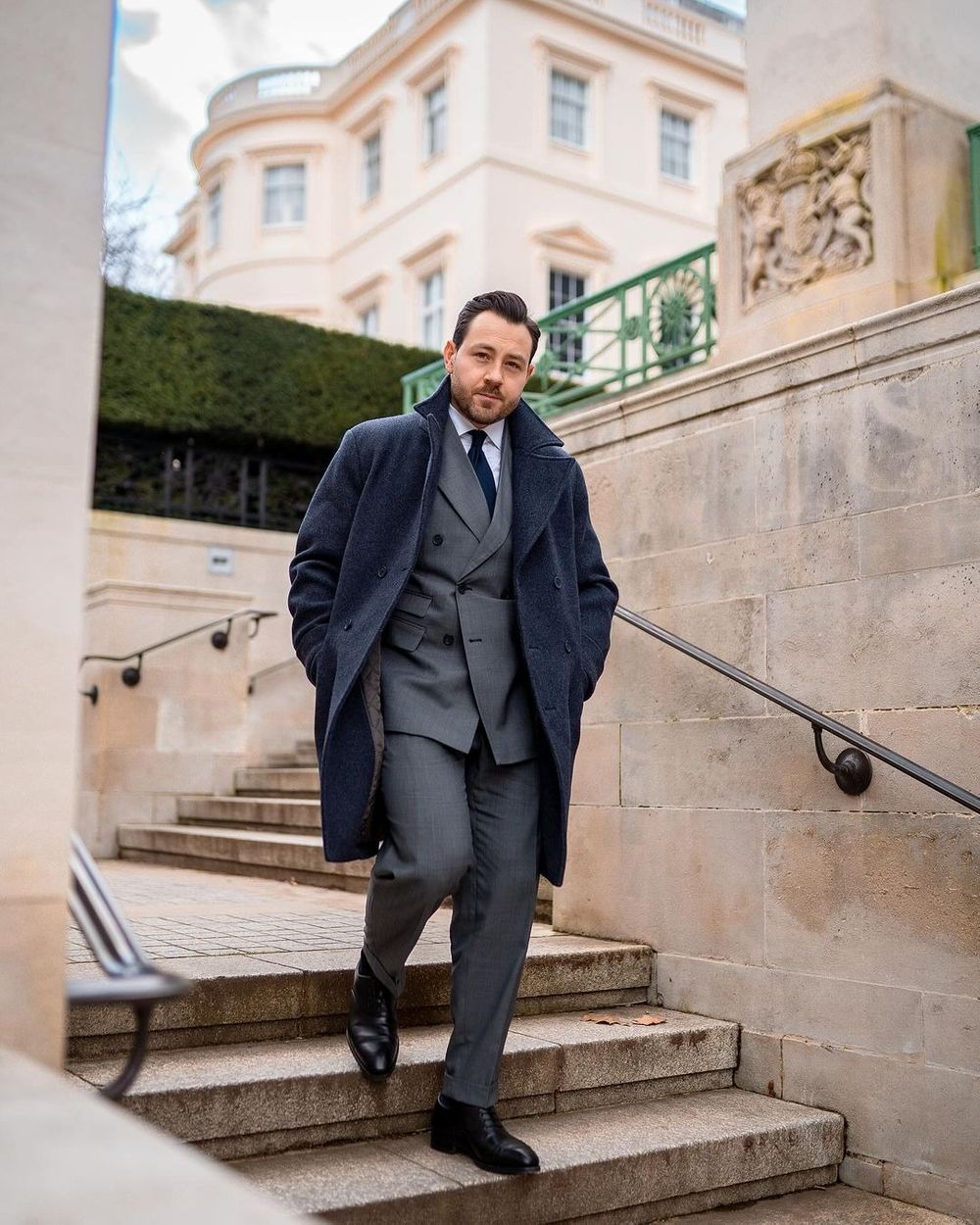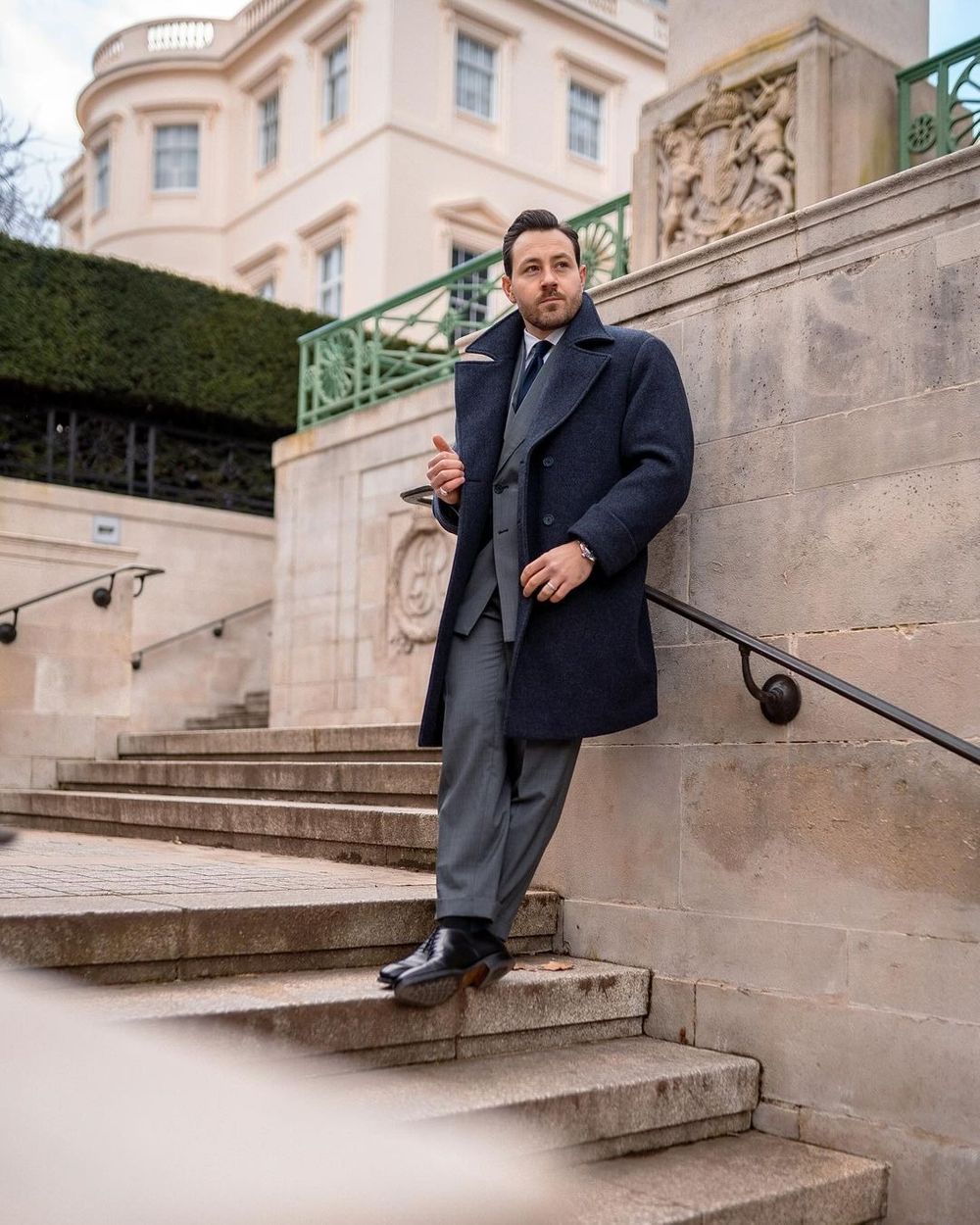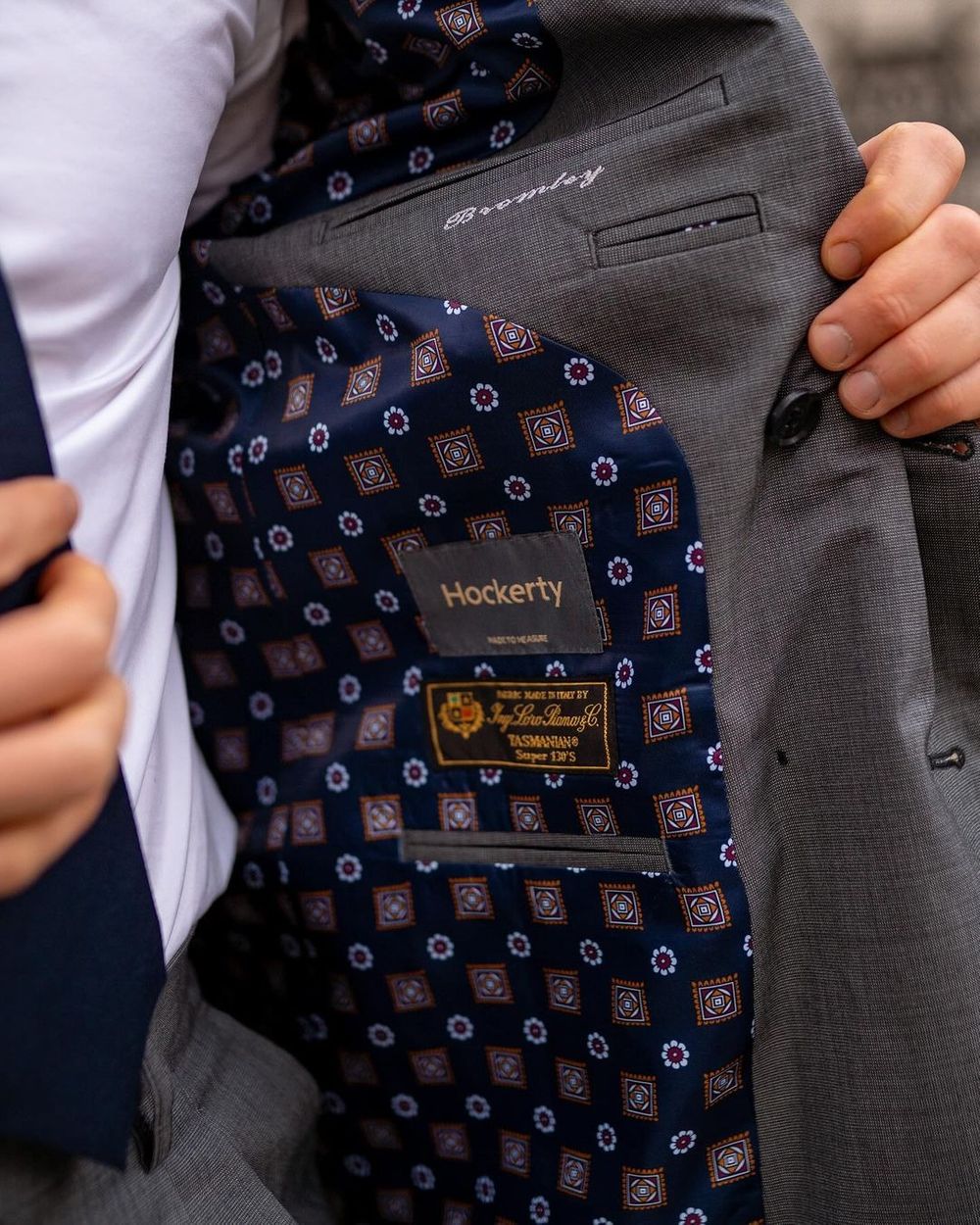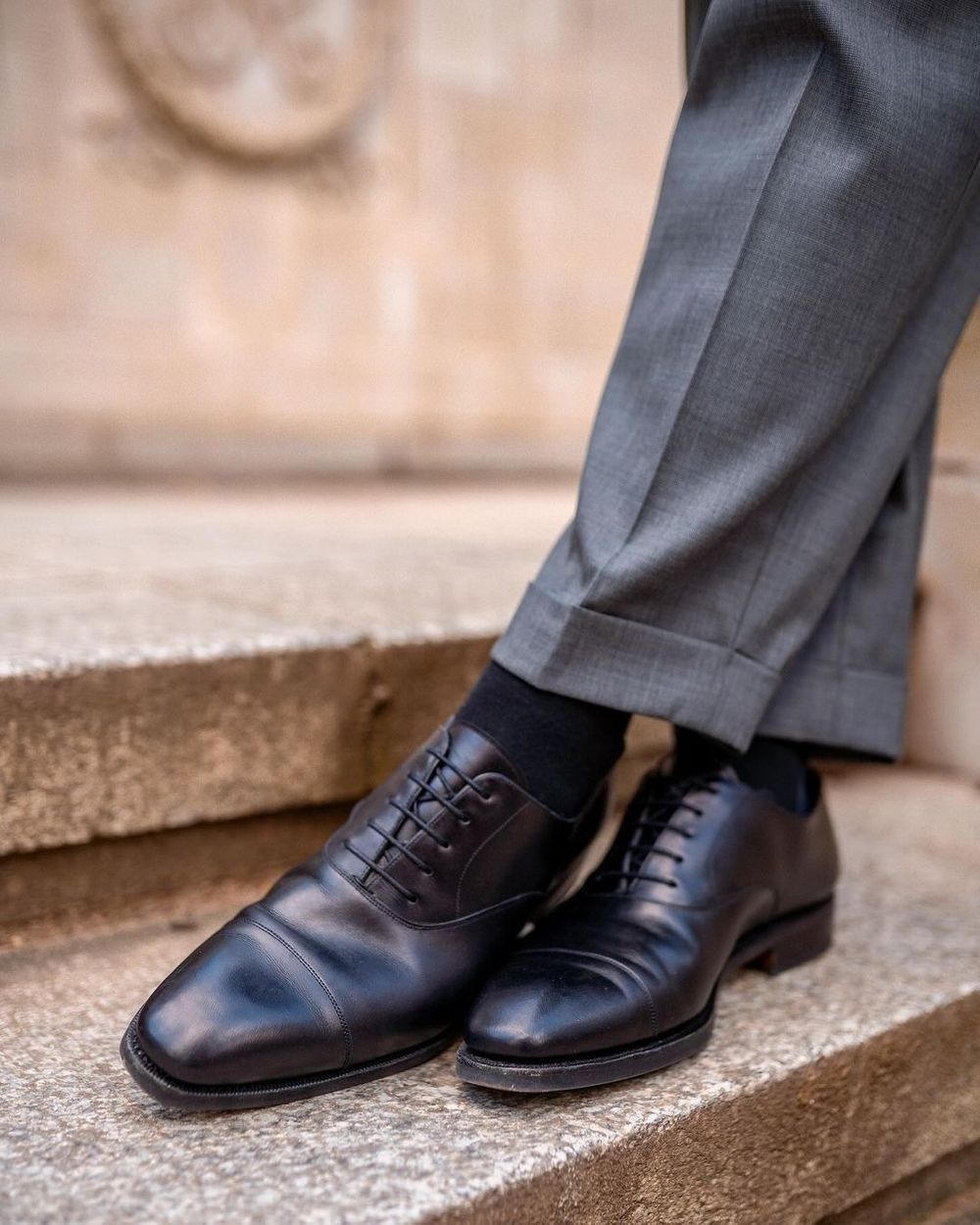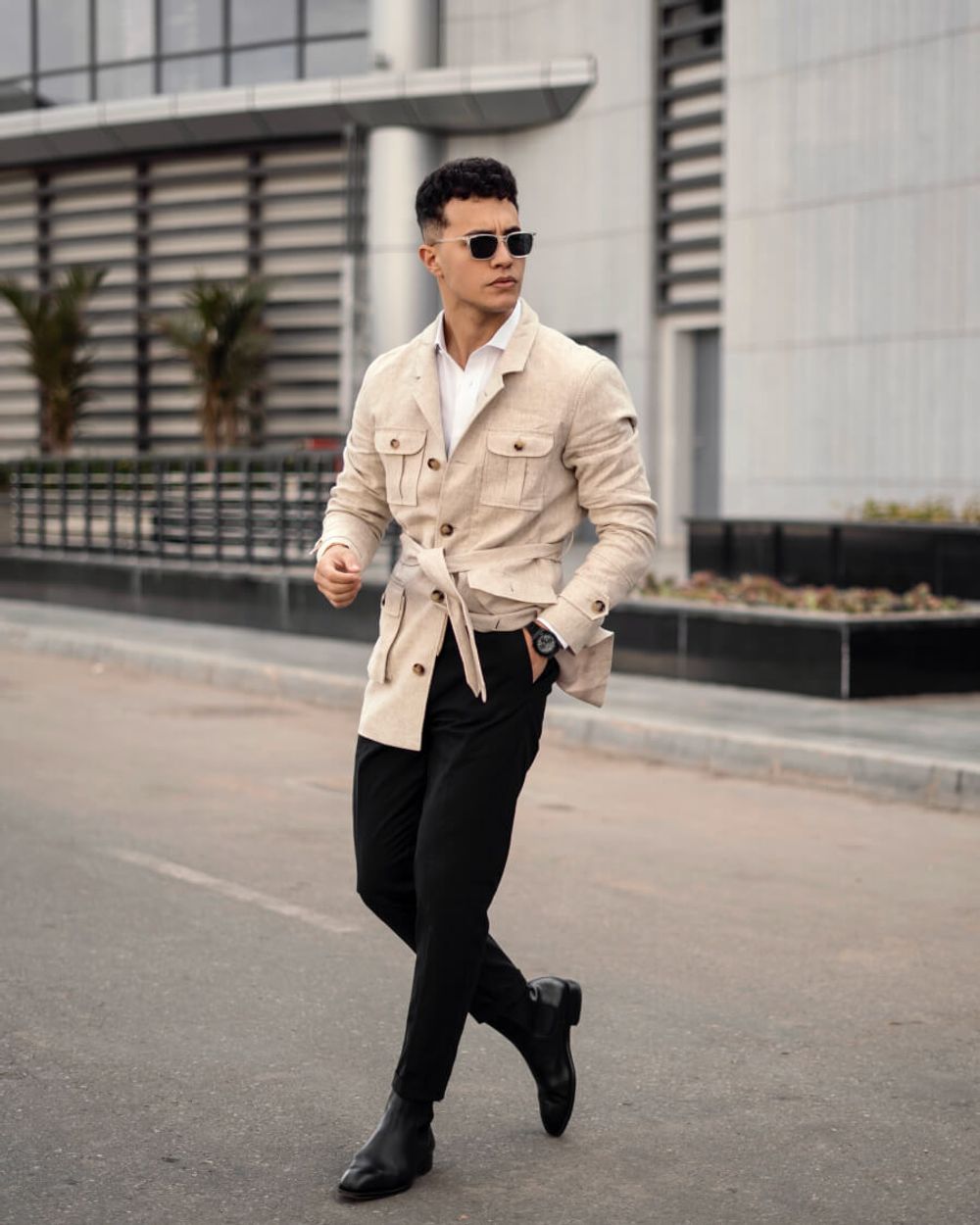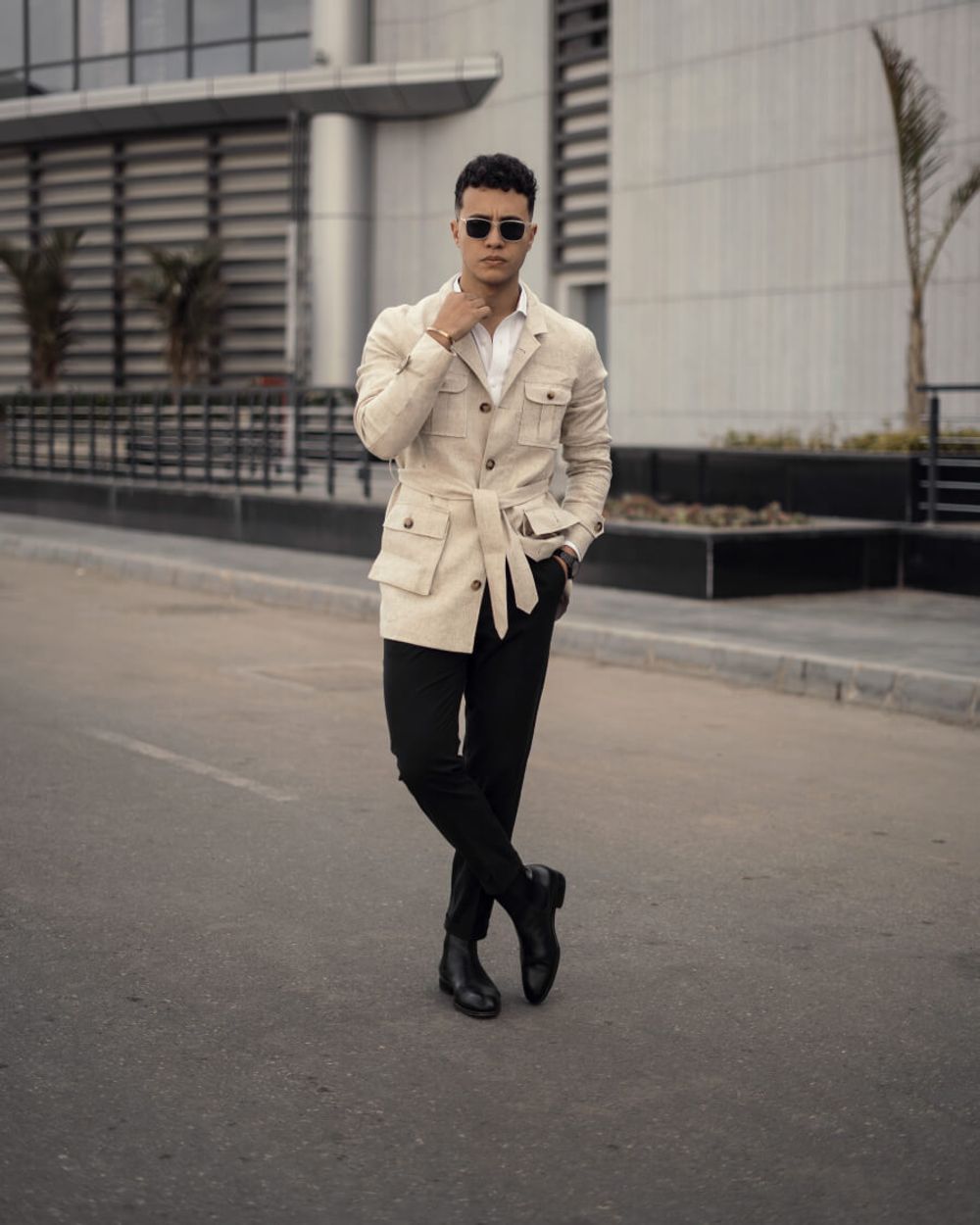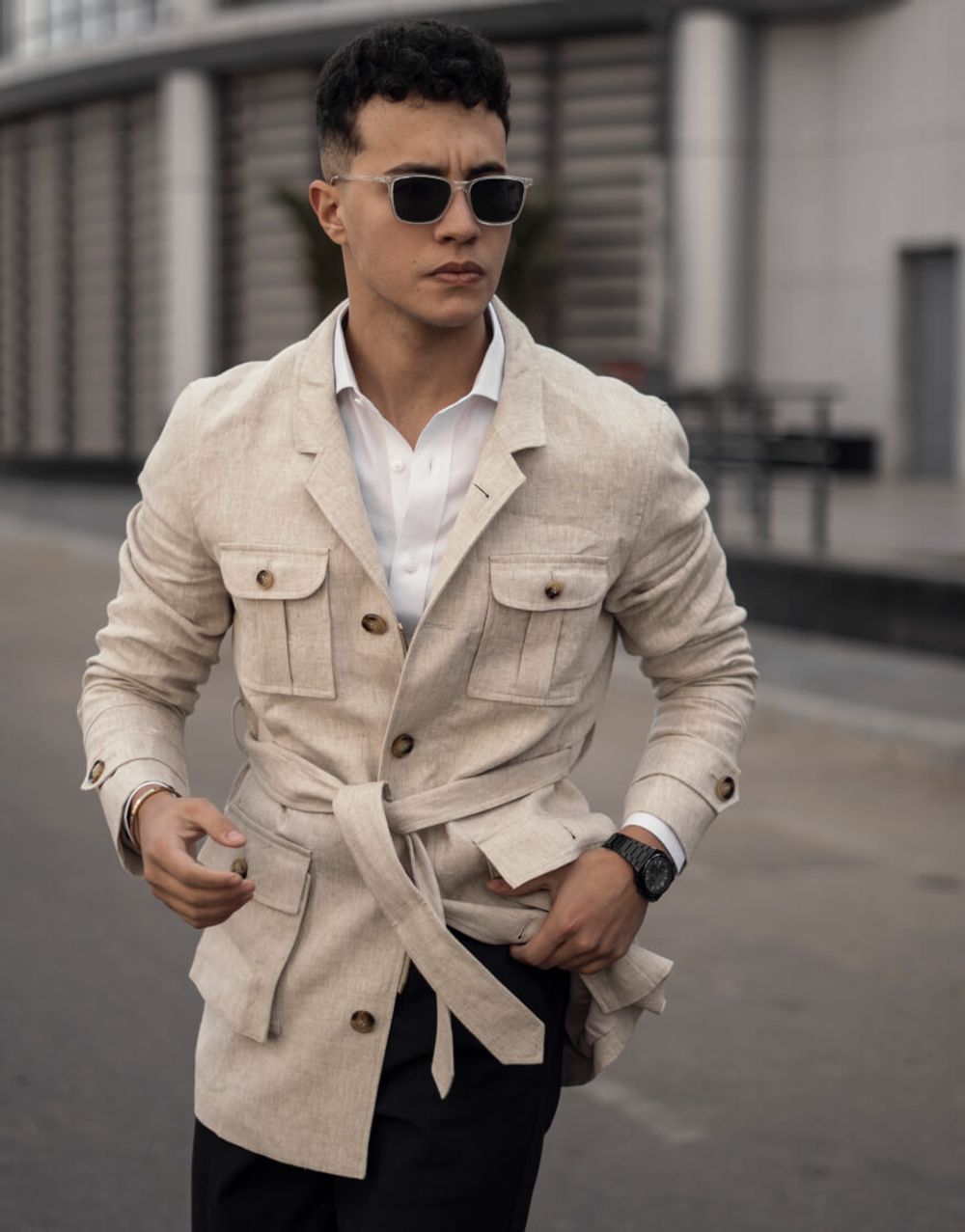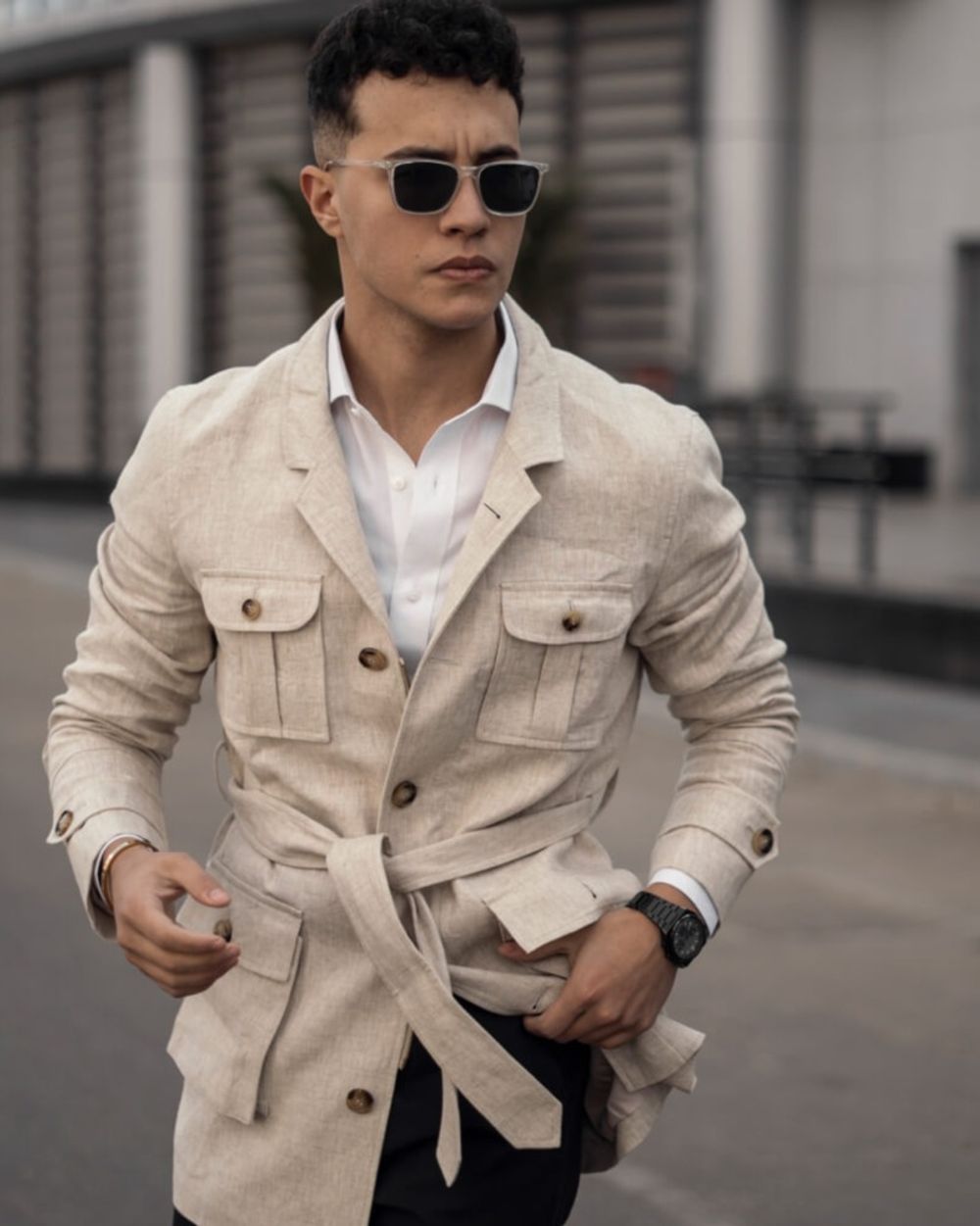Finding the perfect coat is about more than just staying warm—it’s a key part of your personal style. Whether you need something sharp for formal occasions or a more relaxed piece for casual outings, the right coat can elevate any look. This guide will help you navigate the essential styles, fit considerations, and fabric choices to ensure you find a coat that suits both your needs and your taste.
How to Choose the Perfect Coat for Your Style and Needs
Choosing the perfect coat can be daunting, but it all comes down to understanding the balance between style, fit, and practicality. Let’s dive into what you need to know to make the right choice.
Understanding Different Coat Styles
From formal topcoats to casual duffle coats, each style serves a unique purpose and reflects a different aspect of your personal taste. Here’s a breakdown of five popular options:
-
Topcoat: Perfect for transitional seasons, the topcoat is sleek and tailored, ideal for layering over a suit or smart-casual outfits. Its lightweight wool construction makes it versatile for cooler weather without being too heavy.
-
Overcoat: A winter staple, the overcoat is designed for warmth, typically made from thick wool and extending below the knee. Its structured silhouette pairs well with formal wear but can also elevate casual layers.
-
Trench Coat: Known for its iconic belted design, the trench coat is perfect for mild, rainy weather. Traditionally made from water-resistant cotton, it’s a stylish yet functional choice for spring or fall.
-
Pea Coat: With its shorter, double-breasted design, the pea coat is both practical and stylish. Made from thick wool, it offers warmth and flexibility, easily pairing with both casual and semi-formal outfits.
-
Duffle Coat: A more casual option, the duffle coat is known for its toggle fastenings and hood. Its relaxed fit and thick wool construction make it a go-to for cold, outdoor dayss
Coat Fit: Why Fit Is King
The right fit makes all the difference in how a coat looks and feels:
-
Shoulders: Ensure the shoulder seam aligns with the edge of your shoulder for a well-structured fit. Too wide or too narrow, and the coat loses its sharpness.
-
Waist: A slight taper at the waist creates a tailored look. Opt for a relaxed fit in bulkier styles like duffle coats for layering, while slimmer coats benefit from a more fitted silhouette.
-
Length: Shorter coats, like the pea coat, should hit just below the hips for ease of movement. Longer coats, such as overcoats, work best when they extend to the knee or slightly below, offering more coverage and elegance.
Fabric Choices: Style Meets Function
The fabric you choose impacts both the warmth and durability of your coat:
-
Wool: Wool is the go-to for winter coats like overcoats and pea coats, offering excellent insulation without bulk.
-
Alpaca: Alpaca provides warmth with a luxurious feel, perfect for topcoats and overcoats.
-
Silk-Wool Blends: A blend of warmth and smooth texture like car coats, this fabric is ideal for coats that balance formality and comfort.
-
Angora: Known for its softness and lightweight warmth, angora is often blended with wool for a refined, plush finish.
-
Water-Resistant Twill: Often used for trench coats, this tightly woven fabric—typically cotton twill or gabardine—provides water resistance while maintaining a sleek, structured look. It’s perfect for rainy days and transitional weather.
Choose a Coat Based on Occasion
Selecting the right coat for the occasion is crucial to ensuring you’re not just dressed appropriately but stylishly. Whether it’s a business meeting or a casual weekend, the right coat can elevate your outfit and set the right tone.
Business Formal: The Power of a Well-Cut Overcoat
An overcoat is a timeless option for business formal settings, designed to be worn over a suit or tailored separates. The key is in the fit—a well-cut overcoat should complement the sharpness of your suit without adding unnecessary bulk. Choose a single or double-breasted style that falls below the knee, typically in neutral colors like navy, charcoal, or black. These shades offer versatility and pair effortlessly with most suits.
For formal events or important meetings, pairing a classic wool overcoat with a crisp suit adds instant sophistication. The coat should button comfortably over your jacket, allowing enough room for movement but still maintaining a streamlined appearance.
Casual Cool: Pea Coats, Trench Coats, and Field Jackets
For more relaxed, casual settings, coats like the pea coat, trench coat, and field jacket are ideal. A pea coat is perfect for smart-casual outings—its short, double-breasted design provides warmth while looking polished enough for evening dinners or casual meetings. Pair it with jeans, chinos, or even a chunky sweater for a stylish yet laid-back vibe.
A trench coat is your go-to for transitional weather. Lightweight and versatile, it works with everything from dress shirts to t-shirts. Whether you’re headed to a casual workday or meeting friends, the trench coat’s structured yet relaxed design keeps you looking sharp without being overdressed.
For an even more relaxed, outdoorsy look, the field jacket is a strong contender. Its military-inspired design is practical and stylish, perfect for casual weekend activities. Pair it with denim, boots, and a simple tee for a rugged, ready-for-anything appearance.
Weather Matters: Choosing Coats for Different Climates
Your coat should not only match the occasion but also the weather. When temperatures drop, the material and construction of your coat make all the difference in keeping you warm while looking stylish.
Staying Warm: Coats for Freezing Temperatures
When temperatures fall below freezing, warmth becomes your top priority. Duffle coats are a great option for braving cold weather while maintaining a classic style. Made from thick wool and equipped with a hood, the duffle coat provides excellent insulation, especially when paired with layered outfits.
For extreme cold, consider coats with quilted linings. This added layer of padding traps heat effectively, without making the coat too bulky. Insulated fabrics, like wool blends or even alpaca, also offer superior warmth while remaining lightweight. Coats like pea coats and overcoats with quilted lining options are perfect for temperatures dipping below 0°C, offering both style and function.
Explore Our Extra Warm Coat Collection
Transitional Weather: Light Layers for Milder Days
For those in-between seasons, topcoats and trench coats are ideal for spring and fall when it’s too warm for heavy wool but too chilly for no coat at all. A topcoat, typically made from lighter wool or wool-blend fabric, provides just enough warmth while maintaining a sleek, polished look. Its minimal bulk makes it easy to layer over casual and business outfits alike.
If you're expecting wet weather, the trench coat is the ultimate solution. Lightweight yet durable, it offers protection from wind and rain without weighing you down. A trench with water-resistant fabrics like cotton twill or gabardine is perfect for navigating unpredictable spring showers. For even milder days, opt for unlined coats—these coats allow for more breathability, making them an excellent choice for warmer afternoons in fall or early spring.
Coat Length: How to Decide What Works for You
The length of your coat significantly impacts both its style and practicality. From long, sweeping overcoats to shorter, more cropped designs, each length offers distinct advantages depending on your needs and body type.
Long Coats vs. Short Coats: The Benefits of Each
Long coats, such as overcoats and trench coats, offer an elegant and formal look. They’re great for colder weather, as the extra length provides more warmth and coverage. Falling below the knee or even to the calf, long coats elongate the body, making them particularly flattering for taller men. Additionally, they add a sense of gravitas and sophistication to formal outfits, perfect for business meetings or special events.
On the other hand, shorter coats, like pea coats or field jackets, are ideal for casual, everyday wear. Sitting at the hips or just below, they provide more freedom of movement and are better suited for active lifestyles. Short coats often have a more rugged, practical appeal and work well with casual outfits like jeans or chinos. They’re also a great choice for men of shorter stature, as the cropped length helps balance proportions.
| Coat Type | Best For | Style | Weather Suitability | Key Features | Advantages |
|---|---|---|---|---|---|
| Topcoat | Business, smart-casual | Sleek, formal | Mild to cold (fall/winter) | Light wool, knee-length, tailored fit | Versatile across seasons, professional |
| Overcoat | Business formal, evening wear | Classic, formal | Cold (winter) | Heavy wool, long length, single or double-breasted | Provides excellent warmth, timeless style |
| Pea Coat | Casual, semi-formal | Rugged, shorter cut | Cold (winter) | Double-breasted, thick wool, hip-length | Offers warmth with more freedom of movement, flexible for casual/formal looks |
| Trench Coat | Transitional, rainy days | Functional, stylish | Mild to cool, rainy (spring/fall) | Cotton twill or gabardine, water-resistant, belted | Great for unpredictable weather, lightweight |
| Duffle Coat | Casual, outdoor wear | Relaxed, practical | Very cold (winter) | Thick wool, toggle fastenings, hooded | Excellent insulation, perfect for freezing temperatures |
| Field Jacket | Casual, outdoor wear | Military-inspired, casual | Mild to cool (fall/spring) | Multiple pockets, shorter length | Practical with lots of storage, rugged style |
Frequently Asked Questions (FAQ)
How do I pick the right coat for men?
Start by considering the occasion and your personal style. If you need something formal, go for an overcoat or topcoat. For casual settings, a pea coat or trench coat might be better suited. Always ensure the coat fits your body type and is made from a fabric appropriate for the weather conditions.
How will I decide which coat to buy?
When choosing a coat, think about three key factors: style, fit, and purpose. What will you be wearing it for? Business settings require more formal coats like an overcoat, while casual outings work well with a trench coat or pea coat. Make sure the coat fits well on your shoulders and allows enough room for layering.
What color coat goes with everything for men?
Neutral tones like navy, black, gray, and camel are highly versatile and can be worn with almost any outfit. These colors complement both formal and casual wear, making them the perfect choice for a coat that works across different occasions.
How do I choose a good coat?
A good coat should offer the right balance of style, fit, and functionality. Look for quality materials like wool, cashmere, or blends for durability and warmth. Ensure the coat fits well, paying attention to how it sits on your shoulders and its length. Also, consider the climate and whether you'll need additional features like quilted lining for colder days.
What is the most versatile coat for men?
The overcoat is one of the most versatile pieces a man can own. Whether you're wearing a suit for a formal event or dressing down with jeans and a turtleneck, the overcoat complements both casual and formal attire with ease.
How do I know if my coat fits properly?
A well-fitting coat should sit comfortably on your shoulders, with sleeves that reach your wrists and a length that complements your height. For taller men, longer coats work best, while shorter men may prefer a mid-thigh or hip-length cut to avoid overwhelming their frame.
What fabrics are best for winter coats?
For warmth and durability, fabrics like wool, cashmere, and wool blends are ideal for winter coats. Wool provides excellent insulation, while cashmere offers a softer, more luxurious feel. Blends of wool and synthetic fibers also add strength to the material without compromising warmth.
Can I wear a trench coat in winter?
While trench coats are generally best for transitional seasons like spring and fall due to their lightweight design, some trench coats made from heavier materials or with quilted linings can work for milder winter days.
Should I choose a single-breasted or double-breasted coat?
Single-breasted coats tend to be more versatile and work well for both formal and casual looks. Double-breasted coats are more formal and structured, adding a touch of elegance and typically providing more warmth due to the extra layer of fabric.
What is the difference between a pea coat and an overcoat?
A pea coat is a shorter, double-breasted coat made of thick wool, typically ending around the hip. It has a more casual, rugged look. An overcoat, on the other hand, is longer, usually reaching the knee or below, and is often worn over formal wear.
How can I style a coat for a business setting?
For a business look, opt for a classic overcoat or topcoat in neutral colors like navy, black, or camel. Pair it with a suit, dress shoes, and a crisp shirt. A single-breasted coat with a tailored fit will give you a sleek, professional appearance.
If you’re looking for more detailed information on coat styles, check out our blog post on the different types of men's coats to dive deeper into their unique features and discover the one that’s perfect for you!














